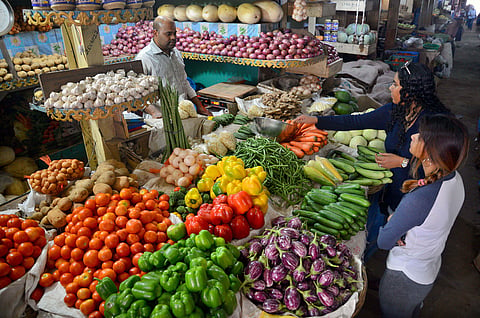

Headline inflation touched an 8-year high last month and the daunting question is if we’ve hit peak inflation. If not, how close are we to the price rise finale?
Unhelpfully, India’s designated inflation fighter, aka, the RBI offered limited foresight. Sticking to the coded central bank speak, as it often does, RBI said ‘risks to inflation are tilted upwards.’ What it didn’t say plainly is that consumer price inflation will be nasty for a while. How long? RBI didn’t hazard a guess. Neither did RBI’s Monetary Policy Committee (MPC) revise its inflation projections when they hunkered down for an unscheduled meeting on May, 4.
Just last month, they projected the first quarter inflation at 6.3%. But with April CPI coming in at 7.8%, May and June must have inflation under 6% to meet the 6.3% forecast. Now, that’s a tall task. Most private estimates peg inflation at 7% for next 2-3 months. In fact, the MPC’s post-policy commentary itself issued a caution on the incoming onslaught of inflation and how we are all surrounded by supply shocks, fallout of the Ukraine war, global food shortages and others. It’s likely the revision in inflation (and may be growth) forecasts will come next month when the MPC meets on June 6-8. But that still may not be the final word on the hotly-debated point of how long and high will the current inflation episode last.
Economists at the IMF used their long view spyglasses and their findings are dispiriting: If history is any guide, we will not experience an out-of-control surge in inflation beyond a couple of years! It isn’t a lifetime, but 24 months are long enough to shipwreck individuals and even economies. The trouble is, there are too many things intertwined like labour market tightness, supply chain bottlenecks, RBI responses, the duration of the Ukraine war, energy and food prices and global growth. The IMF staff believe inflation beyond 2025 depends on two things: how determined central banks are to rein in inflation and the bond market’s confidence that governments are willing to pay their debts without inflating them away.
But then others believe raising rates to fight inflation is a crude tool, when the source of trouble is fiscal policy. A staggering $17 tn in fiscal measures was announced globally to fight Covid since March 2020. This bunch, otherwise called ‘Team Persistent,’ forewarned about how large stimulus combined with ultra-low interest rates is a potent reciepe for disastrous inflation. Team Transitory opposed the view then, but reality speaks for itself. So global central banks, who once dragged their feet are now rushing to act with rate hikes. But it isn’t as easy as frightening children into obedience than taming a supply side-driven price stubbornness with rate hikes.
That’s because, rising rates make government debt unsustinable and can even spark a debt crisis, besides of course causing an economic slowdown. For instance, going by standard calculations, IMF believes advanced economy central banks could easily take rates as high as 7% to rein in inflation. In reality though, that’s an invitation for global market mayhem and economic and financial disorder of a scale one can least imagine.
situation back home does bear similarities to global peers. Governor Shaktikanta Das, who was firmly in Team Transitory exercising extreme tolerance toward inflation until March, did an about-turn in April, putting inflation ahead of growth. His anti-inflation attitude came into full display early this month, when he began warring against price rise with a 40 bps repo rate hike. The good news though is, RBI’s currency printers didn’t go into an overdrive and unlike advanced nations, India’s stimulus was moderate. The government, which took criticism for its Covid response, now stares at another difficult choice between additional spending (if inflation persists) and rationalising capex.
RBI’s fight against inflation
Unhelpfully, India’s designated inflation fighter, aka, the RBI offered limited foresight. Sticking to the coded central bank speak, as it often does, RBI said ‘risks to inflation are tilted upwards.’